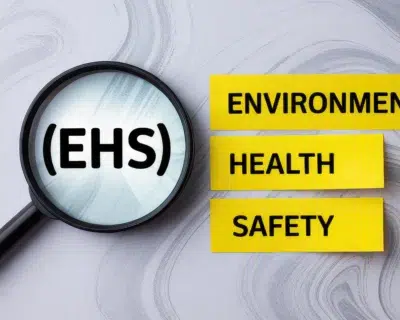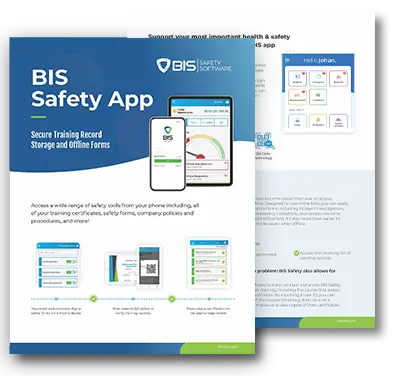
Training Record Management in 2023
2023 has cemented many trends, and ample training is no exception. Training provoked awareness is key to safety. With this ample training trend, we also learned managing training records can get messy and requires its own systems. Today we entrust these systems to keep precise and current records of all employee training, such as the training material, length, and completion status. These systems streamline training and cut many administrative duties out of the process. Essentially, they gained popularity out of necessity. This is why training record management systems are here to stay in 2023.
Contents:
Training record management has become a vital aspect of any organization’s training program. Companies are jumping on board and creating their own training management systems, which capture all necessary information related to employee training, such as the training content, duration and completion status. Additionally, a good system should be able to monitor the progress of both individual employees and the overall training program.
This may seem difficult for some, however, some may find that using an electronic training management system makes training record management easy, as it allows for straightforward tracking and management of employee training records, and both employees and managers can access it. These electronic systems also provide the ability to share training information across different departments and locations.
Another important aspect of training record management is the establishment of clear policies and procedures for tracking employee training. These policies should outline the organization’s requirements for training, including the specific training types, frequency, and duration, designate the responsible party for tracking employee training, and establish procedures for maintaining and updating training records.
Consider regularly reviewing and renewing the training management system to ensure that it maintains accurate and up-to-date training records and that employees receive the necessary training to perform their jobs effectively. This practice also ensures that the organization complies with any regulatory requirements for employee training. It also helps to ensure that the organization is in compliance with any regulatory requirements for employee training.
In addition to maintaining accurate records, organizations must also ensure that employee training remains relevant and efficient. This entails continuously evaluating and updating the training content to ensure its currency and alignment with employee needs. It also involves assessing the effectiveness of the training and making any necessary adjustments.
Training management in 2023 often starts with the following:
- Establishing a training management system
- Utilizing an electronic training management system
- Creating clear policies and procedures for tracking employee training
- Regularly reviewing and updating training records
- Ensuring employee training is relevant and effective
- Periodically evaluating the effectiveness of the training
By implementing these steps, organizations can effectively manage their training programs, enhance employee performance, and comply with regulatory requirements.
Documenting and Organizing Training Records
Proper documentation of training is a significant aspect of training record management. This includes keeping records of the training material, duration, and completion status for each employee. Additionally, it includes maintaining records of any certifications or qualifications that employees may have gained as a result of their training. These records can be used to demonstrate compliance with regulatory requirements and to provide evidence of employee qualifications if necessary.
To manage employee training records efficiently, it is essential to have a system in place for storing and organizing these records. This can include using an electronic database or a physical filing system, depending on the organization’s needs. The key is to have a system that allows for easy access and retrieval of training records when required.
Some less-considered aspects of a training record management system are communication and collaboration. This includes frequently sharing training records and information with other departments and locations, as well as working with employees to ensure that they are aware of their training requirements and progress. It also includes working with managers to ensure that they are aware of employee training progress and can provide support and guidance as needed.
2023 Training Record Management Systems Summarized
In summary, training record management is a vital aspect of any company’s training program. By creating a training management system, clear policies and procedures, frequently reviewing and updating records, and ensuring that employee training is properly documented, organizations can effectively manage their training programs and enhance employee performance. Furthermore, effective communication and collaboration with employees and other departments is crucial to ensure that training records are accurate, up-to-date, and useful for both employees and the organization.
Why a Training Matrix is a Popular Addition to Training Management Systems
Using a Training Matrix in conjunction with a Training Record Management System is an effective way to ensure that employee training is properly tracked and managed. A training matrix, also referred to as a competency matrix, is a tool used to identify and track the skills, knowledge, and abilities that employees need to perform their jobs effectively. By incorporating a training matrix into your training record management system, you can ensure that employee training is aligned with the specific skills and competencies required for their roles.
What Does a Training Matrix Do?
A training matrix typically comprises a list of job roles or positions within the organization, along with a list of the skills, knowledge, and abilities required for each role. Each employee is then assigned to a specific role and their training records are tracked against the skills and competencies required for that role. This allows for easy tracking of employee progress and completion of training, as well as identification of any training gaps or areas where additional training is needed.
Key Advantages of a Training Matrix
Using a training matrix with your training record management system allows for a more targeted and effective approach to employee training. By identifying the specific skills and competencies required for each role, you can ensure that employees are receiving the training they need to perform their jobs effectively.

A training matrix also allows for easy tracking of employee progress and completion of training. By tracking employee training records against the skills and competencies required for their role, you can quickly identify areas where additional training is needed. This allows for more efficient use of training resources and helps to ensure that employees are receiving the training they need to perform their jobs effectively.
In 2023, using a training matrix can also help to better align employee training with organizational goals and objectives. You can make sure that employee training is in line with the general aims and objectives of the firm by determining the precise skills and competencies needed for each function. This can assist the organization’s overall performance and guarantee that it complies with any legal or regulatory requirements for employee training.
Improved communication and collaboration between various divisions and locations within the organization is another benefit of employing a training matrix. Different departments and locations can collaborate to make sure that workers receive the training they require to do their jobs well by exchanging training records and information. This means the organization can enhance its overall performance and adhere to any regulations mandating employee education. Additionally, some training matrixes can be integrated with a Training Record Management system and Learning Management system, allowing all that data to be shared across the applications and courses to be sent to the team members.
Incorporating a Training Matrix into your TRM
Incorporating a training matrix into your system for managing employee training records leads to enhanced reporting and analysis capabilities. By comparing employee training records to the skills and competencies required for their role, you can easily create reports and analyze data on employee training. This can be used to spot trends and patterns in employee training, as well as to find out where additional training is needed.
A training matrix also facilitates better management and accountability of employee training. By outlining the specific skills and competencies required for each role, you can ensure that employees are receiving the necessary training to do their job effectively. This also helps to hold employees accountable for their training and to perform their job effectively.
A training matrix with a training record management system can also improve employee engagement and motivation. By clearly defining the specific skills and competencies required for each role, employees are aware of their training requirements and progress. This can increase employee engagement and motivation, as well as overall employee performance and productivity.
Additionally, using a training matrix allows for better tracking of employee development and career progression. By tracking employee training records against the skills and competencies required for each role, organizations can easily identify areas where employees have excelled and have potential for career progression. This can assist organizations in identifying and promoting high-performing employees, and ensure that employees are receiving the training necessary for career progression.
Overall, using a training matrix with your training record management system can effectively ensure that employee training is tracked and managed. A training matrix can assist organizations in identifying and tracking the skills, knowledge, and abilities that employees need to perform their jobs effectively. By incorporating it into a training record management system, organizations can align employee training with organizational goals and objectives, improve employee performance and productivity, and comply with regulatory requirements. Additionally, tracking employee progress and completion of training can identify areas where additional training is needed and promote high-performing employees.




































